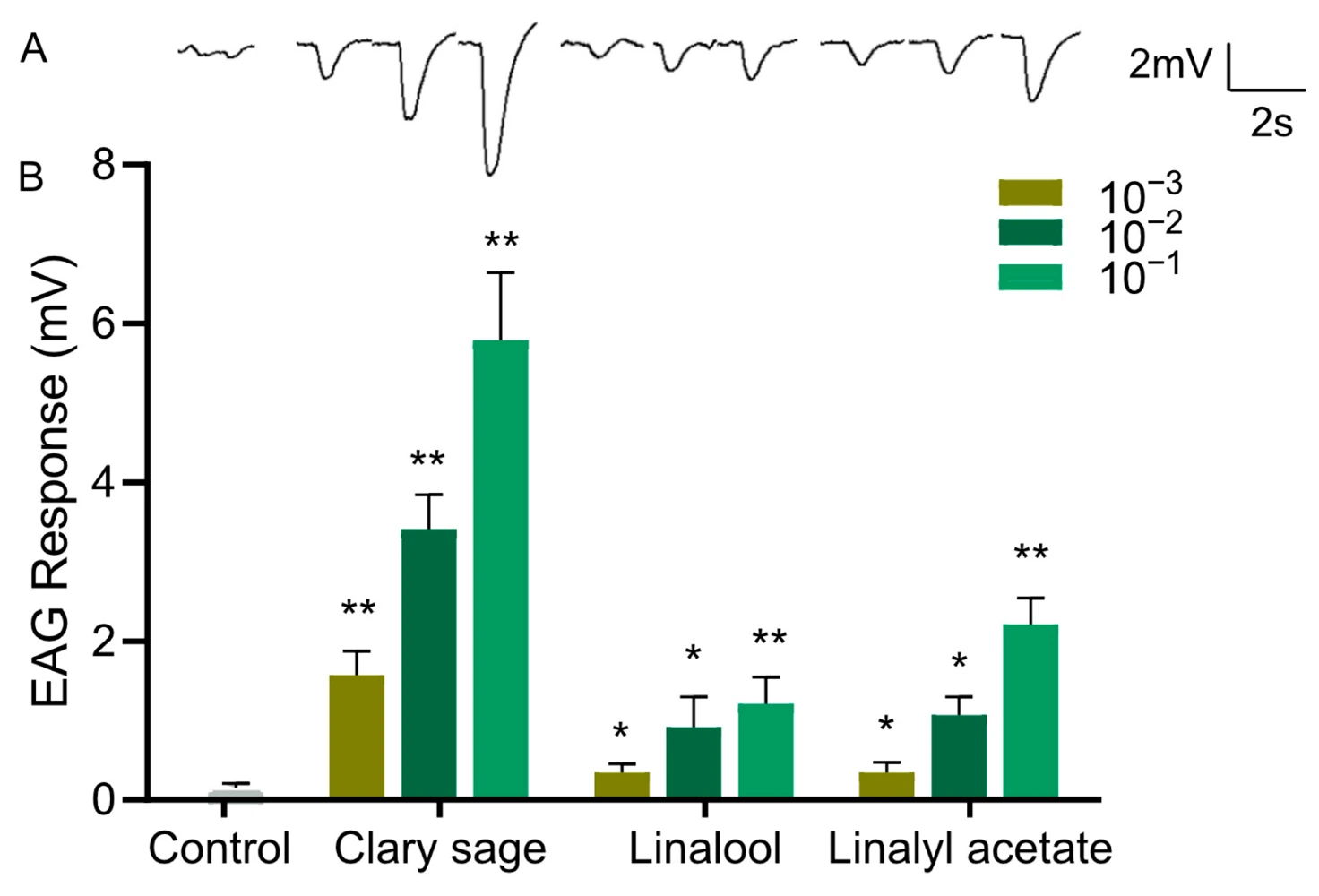Small fruits are significantly threatened by Drosophila suzukii, an invasive pest that lays its eggs in ripe fruit, compromising its quality and shelf life. This problem is found in the Americas, Europe, Africa and Oceania, as well as Asia, and has become an important topic of study.
The reasons for the success of this midge lie in its wide host range, high fertility and short generation time. The main control strategy for D. suzukii is the application of chemical insecticides; however, resistance phenomena are developing due to the indiscriminate use of these chemicals. A potential alternative could be essential oils, but both their attractiveness and deterrence to this insect must be known.
Indeed, they can demonstrate powerful toxic and behavioural sub-lethal effects against a variety of pests, including D. suzukii. Sage (Salvia sclarea) essential oil is known to repel a variety of household and agricultural pests but the specific effect on D. suzukii remains uncertain.
In this study, conducted at Zhejiang University and the Provincial Centre for Disease Control and Prevention in Hangzhou (China), researchers implemented several behavioural assays to investigate the repellent properties of sage oil on larvae and adults of D. suzukii.
In addition, an analysis of the constituents of sage oil and an examination of the repellent effect of its main constituents, defined as linalyl acetate and linalool, was conducted to determine whether the repellency of the oil is conferred by these specific molecules.
Finally, the electro-anthennographic response of D. suzukii adults to clary sage oil and its two main constituents was examined. In this study, sage essential oil was found to exert a repellent function against D. suzukii adults and this was confirmed by the results of the two-choice attraction test.
 Immagine 1: Risposte EAG degli adulti di Drosophila suzukii all'olio essenziale di salvia e ai suoi due principali costituenti. (A) Tracce EAG rappresentative suscitate da olio di salvia sclarea, linalolo e acetato di linalile alla diluizione 10−1. (B) Risposte EAG all'olio di salvia sclarea, al linalolo e all'acetato di linalile. Fonte: Yu Wang et al., 2024.
Immagine 1: Risposte EAG degli adulti di Drosophila suzukii all'olio essenziale di salvia e ai suoi due principali costituenti. (A) Tracce EAG rappresentative suscitate da olio di salvia sclarea, linalolo e acetato di linalile alla diluizione 10−1. (B) Risposte EAG all'olio di salvia sclarea, al linalolo e all'acetato di linalile. Fonte: Yu Wang et al., 2024.
However, it is emphasised that this effect is dose-dependent. In addition, sage essential oil demonstrated a substantial repellent effect on D. suzukii larvae. Analysis of the chemical constituents of sage essential oil led to the identification of two main constituents: linalool (23.02%) and linalyl acetate (40.03%).
Furthermore, behavioural assays of linalool and linalyl acetate showed that both compounds exhibit a very strong effect against D. suzukii adults and larvae. It was understood that sage essential oil, linalyl acetate and linalool elicited electro-anthennographic responses in D. suzukii, of which sage essential oil was particularly effective.
This suggests that the chemical components of this oil were mediated by the olfactory system, triggering a repellent reaction. This shows that Drosophila exhibit olfactory avoidance behaviour. In conclusion, the olfactory and repellent response induced by sage oil and its two main constituents, linalool and linalyl acetate, are observed in D. suzukii adults and larvae.
This research not only establishes a basis for future mechanistic studies on the repellent effect of essential oils, but also offers evidence that sage essential oil and its main constituents may serve as viable alternatives for the control of D. suzukii.
Source: Wang, Y.; Wen, F.; Zhou, X.; Chen, G.; Tian, C.; Qian, J.; Wu, H.; Chen, M. Deterrent Effects of Clary Sage Oil and Two Major Constituents against Drosophila suzukii (Diptera: Drosophilidae). Insects 2024, 15, 733. https://doi.org/10.3390/insects15100733.
Images: Martin Hauser, California Department of Food and Agriculture; Yu Wang et al., 2024.
Melissa Venturi
University of Bologna (IT)
Cherry Times - All rights reserved











